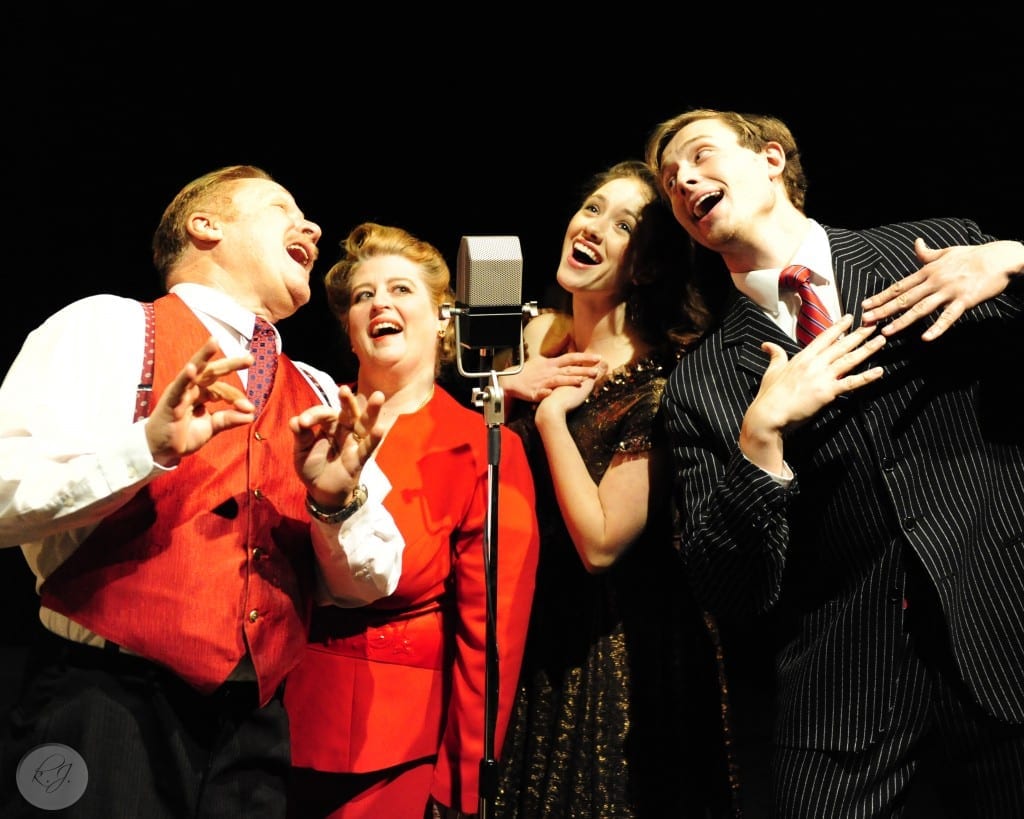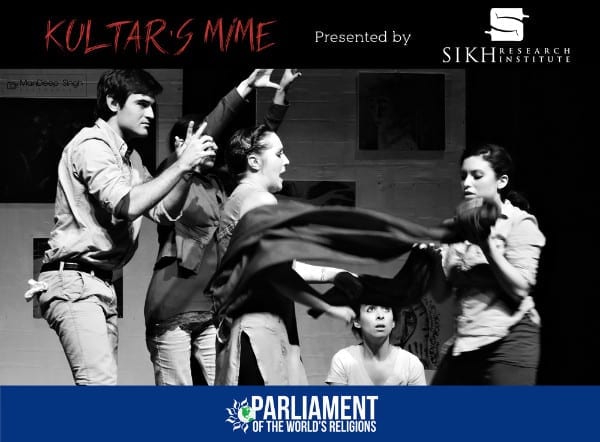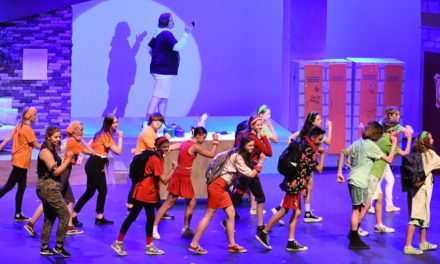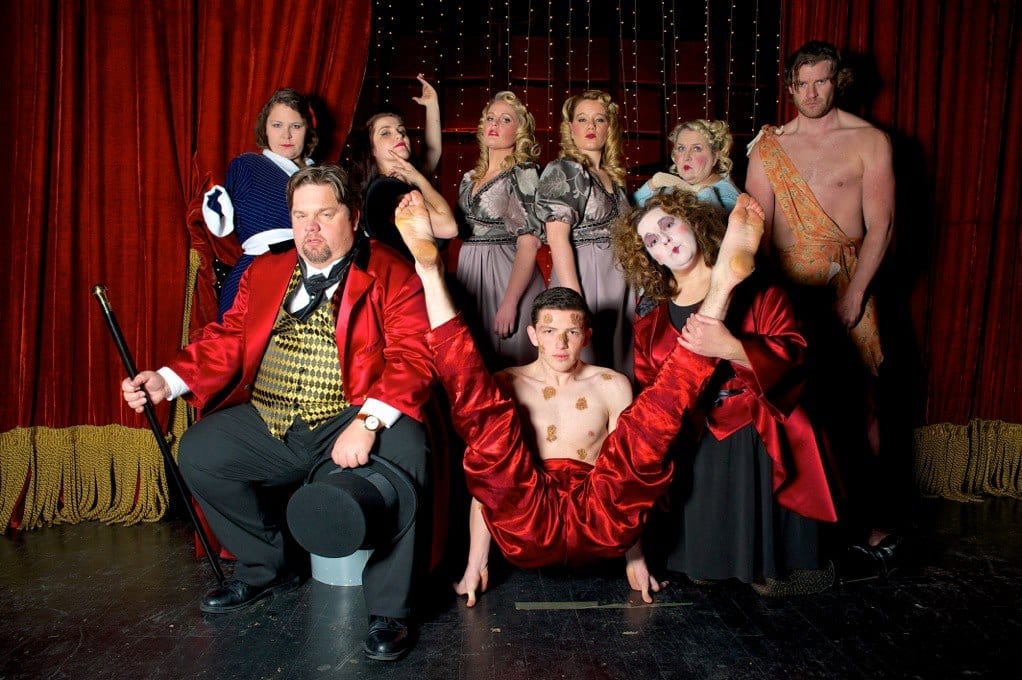CENTERVILLE — As much as I tried to remain impartial, I have to admit that I went into reviewing Centerpoint Legacy Theatre’s Leishman Performance Hall’s It’s A Wonderful Life, A Live Radio Play expecting to be disappointed. The trouble is that the Jimmy Stewart movie happens to be one of my all-time favorites, and I just couldn’t imagine any production ever coming close to Stewart’s epic film. However, as I became immersed in the world of the live radio show, though my mind often pictured the scenery and even actors of the classic movie, all expectations were well exceeded and this production became one of my favorites this year.
Based on the film of the same name, Joe Landry’s radio show adaption of It’s A Wonderful Life creates a performance-within-a-performance atmosphere, as the audience becomes the live radio show audience and the actors on the stage are 1940’s actors playing the It’s A Wonderful Life parts. This framework allows for a certain intimacy among the actors and the audience—as the actors often break the fourth wall, particularly in the “pre-show” moments as they shuffle onto the stage before the broadcast goes “live.” It also allows for the audience to use their imaginations to visualize the story as the actors created the characters (no small feat in itself). This intimacy with the audience and this distance from a determined set allowed the play to measure up to the classic movie, as the audience had the freedom to enjoy a new angle of It’s A Wonderful Life without constantly comparing the “radio show” to the original film.
 Director Carol Thomas Madsen must have been born to direct this play, because according to the program, this is her directorial debut at least at CPT. There was not a single cast member who was the “weak link,” and this show is incredibly complex to perform in, given that each actor is playing actors playing roles. Madsen shaped and guided the actors to work together seamlessly, and her staging of scenes was inspired. The set (designed by Brian Hahn) was a radio show stage, complete with an “applause” cue, an “on air” sign, a sound effect table (manned by the talented Michael Nielsen), and two 1940’s-style mics placed on opposing sides of the stage. During scenes in which the same actor dramatically plays two different roles, Madsen had the actors switch mics—a simple but powerful move—as the actors visually walked from one character into another with their mannerisms and body language, creating distinct characters.
Director Carol Thomas Madsen must have been born to direct this play, because according to the program, this is her directorial debut at least at CPT. There was not a single cast member who was the “weak link,” and this show is incredibly complex to perform in, given that each actor is playing actors playing roles. Madsen shaped and guided the actors to work together seamlessly, and her staging of scenes was inspired. The set (designed by Brian Hahn) was a radio show stage, complete with an “applause” cue, an “on air” sign, a sound effect table (manned by the talented Michael Nielsen), and two 1940’s-style mics placed on opposing sides of the stage. During scenes in which the same actor dramatically plays two different roles, Madsen had the actors switch mics—a simple but powerful move—as the actors visually walked from one character into another with their mannerisms and body language, creating distinct characters.
 Another fun choice that Madsen made was to have the actors use simple costume props—a hat here, a scarf there—to distinguish for the actors (and for the audience) different characters. The 1940’s costumes (designed by Jennie Richardson) were stylish and appropriate, and the addition of the small costume props added depth and distinction.
Another fun choice that Madsen made was to have the actors use simple costume props—a hat here, a scarf there—to distinguish for the actors (and for the audience) different characters. The 1940’s costumes (designed by Jennie Richardson) were stylish and appropriate, and the addition of the small costume props added depth and distinction.
Of course, no amount of directorial talent can make up for poor acting. In the performances, though It’s a Wonderful Life was a gold mine. My utmost respect goes to Ricky Ferlin, who played Jake Lawrence, the character playing George Bailey (Jimmy Stewart’s role in the film). It takes guts to take on such an iconic character and to do it in a unique and refreshing way. Ferlin’s Jake Lawrence was charismatic and lovable, qualities that rubbed off on his George Bailey. While Stewart often adds a dark, even grumpy edge to George Bailey, Ferlin gave Bailey a youthful innocence and excitement that was new but not “blasphemous.” It fitted the character written and so it worked well enough that Stewart’s Bailey was out of my mind for the majority of the show (surprising because I have seen the movie more than a hundred times). In particular, the scene in which George Bailey is calling on Mary stood out as a refreshing take. In the movie version, Stewart maintains his grumpy edge the entire scene—even when confessing his feelings for Mary. Ferlin, on the other hand, played the scene with emotional honesty and intensity that was sweet, exciting, and touching. He allowed George Bailey to enjoy the moment—letting the audience to do the same.
 Playing across Ferlin’s Bailey, Jessica Love’s Sally Applewhite, who “played” Mary, was a good match for Ferlin. Though Love’s Mary was the sweet, innocent Mary from the movie, her acting was genuine and heartfelt, creating a character in Mary (and Applewhite, who mimicked the personality of Mary) who was a strong and lovable female protagonist. During the scene in which George calls on Mary, Applewhite created a sense of fun with her flirty, happy demeanor.
Playing across Ferlin’s Bailey, Jessica Love’s Sally Applewhite, who “played” Mary, was a good match for Ferlin. Though Love’s Mary was the sweet, innocent Mary from the movie, her acting was genuine and heartfelt, creating a character in Mary (and Applewhite, who mimicked the personality of Mary) who was a strong and lovable female protagonist. During the scene in which George calls on Mary, Applewhite created a sense of fun with her flirty, happy demeanor.
It’s not often that you get the opportunity as an actor to play multiple people in the same scene—even arguing with “yourself” while playing different characters on occasion. Yet the radio show format allowed for just that, adding yet another new element to the production. Dann Howard was Freddie Fillmore, the actor who played multiple parts including the bumbling Uncle Harry, the stern head angel, the main villain himself—Mr. Potter, and Peter Bailey, George’s kind father. Howard had a distinctive voice and even mannerisms for each character. Most impressive of all was when two of his characters were talking with each other. In one scene, Howard acts out a heated argument between stern, growl-of-a-voice Mr. Potter and the kind, gentle-spoken George Bailey. Watching Howard play the scene felt almost schizophrenic—but somehow, every time he needed to switch from character to character in an instant, he pulled it off brilliantly.
The other multiple-character playing actors—Alyn Bone as the actress Lana Sherwood and Dave Madsen as the actor Harry “Jazzbo” Heywood—never missed a beat. Bone and Madsen, though both grown adults, surprisingly played the two youngest children of George and Mary Bailey adorably. It was an odd experience to see with my eyes two adults but hear with my ears two adorable preschool and toddler children. Dave Madsen’s toddler voice especially was so sweet and believable it was hilarious—particularly during his line, “Excuse me—I burped!” Beyond playing children, however, both actors excelled in once again the wearing of many hats, often in the same scene. Their abilities to transform their voices for each part were amazing and delightful to experience. Adding charm and atmosphere to the production was the lovely Maren Ernstrom, playing pianist Lottie Mae Anderson. Ernstrom’s 1940’s Christmas classics were the perfect accompaniment to this classic Christmas story.
This show touched me deeply, and I will admit that I spent the last twenty minutes or so of the production in tears (an emotional state which a glance around showed was not unique to me). The script was fabulous, the direction impeccable, and the acting impressive. All of these elements combined to create a moving, beautiful piece of art that taught me once again: “No man is a failure who has friends.”






